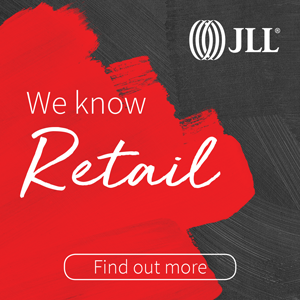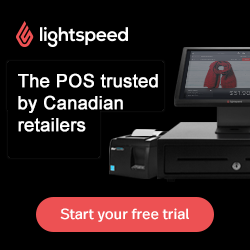Smart Vending Machines Could be the Next Big Thing for Pop-up Retail in Canada
/By Michelle Brisebois
It’s never a good thing when the media attaches the word “apocalypse” onto your root word. Apocalypses tend to be events from which there is no recovery and when the term “retail apocalypse” started showing up in news reports several years ago, it suggested we’d come to the end of shopping. Well, maybe the end of shopping… as we know it?
The news of retailing’s death are greatly exaggerated. It’s alive and well and popping up at a location near you.
Pop up retail has been identified as the top retail trend for 2018 and with good reason. It takes the notion that a store is a destination to which we pilgrimage and turns it around. We no longer go to the store, the store comes to us. Online shopping has made us accustomed to having access to anything we want at anytime of day but it’s not the most significant factor in the wave of store closures. Online retail sales represent 9% of all retail revenue, a figure expected to grow to just over 12% by 2020 according to statistica.com. That still leaves 88 - 91% of retail sales to the physical stores. Pop-up retail stores by definition are designed to be temporary locations that take advantage of a great location, smack dab in the middle of consumer traffic that’s predisposed to be interested in the products being sold. The temporary nature of the location stimulates sales by stoking a sense of scarcity and a “buy it now or regret it” mentality. Many retailers report that the sales lift for a pop-up location can be around 35% or greater than a typical, more permanent store. Pop up stores can be stand-alone, kiosks or smaller stores hosted within the walls of a bigger store.
The dynamic nature of the store operations is the very thing that makes pop-up retailing available to only the larger retailers who can afford the price of admission.
Mounting a pop-up location still requires fixtures, rent, insurance, utilities and the grand-daddy of all operational costs - labour. With recent increases in minimum wage, labour is a larger piece of the the P&L than ever before. Nirvana, would be to have the automation of an online shopping experience with the tactile and personalized interaction of a physical store.
Vending machines are the natural bridge between the online and physical stores. Enter the era of the Smart Vending Machine.
A Smart Vending Machine is defined as a traditional vending machine married with software that gives it superpowers. Vending machines have been around for decades because the desire to conduct commerce in the absence of human beings to operate the store is not new. The marriage of the product delivery with the technology means that there is an opportunity for these machines to give an amazing customer experience and to be customized to the product. CEO /President of SMRT1 Technologies, Brad Pommen is part of the burgeoning technology revolution that’s changing the face of retailing. His company creates Smart Vending Machines by installing innovative hardware that enhances the customer interface and data collection. The new Smart Vending Machine is now called a Brain STEM Toolbox.
What makes a Brain STEM Toolbox revolutionary for retailers is that it’s a relatively inexpensive retrofit and accessible to any size business whether the order is for one machine or many more.
For less than $10,000 including the vending machine, SMRT1 Technologies can create a Brain STEM Toolbox that has an interactive touch screen that allows the customer to ask questions and get information to help them decide what to buy. The machine takes a variety of payment types including cash, credit and a digital wallet. The Brain STEM Toolbox also uses machine learning to take the data it collects from the customer interactions and uses this data to continuously improve the experience - much like a great employee keeps improving as they learn on the job. The machines can also capture other data points the merchant feels are important such as foot traffic passing by, air quality, the gender and age of the customers. The retailer will have an amazing dashboard of information to leverage. The Brain STEM Toolbox can be used to test a location and build awareness and demand before opening a physical store. It’s also perfect for hosted locations inside of already-established operations like malls, big box stores, recreation centres, schools or hospitals. If another location becomes more attractive; it’s very easy and inexpensive to move the Brain STEM Toolbox to its new home. There are many vending machines in market right now with basic, traditional features that could easily morph into Brain STEM Toolboxes.
“Any vending machine of any age can become a Brain STEM Toolbox and it excites me to be able to give new purpose to equipment that might otherwise end up in the landfill,” said Brad Pommen CEO/President of SMRT1 Technologies.
An example of how a Brain STEM Toolbox might be used to grow revenue comes from the experiential tourism sector. “A fly-fishing lodge could have a Brain STEM Toolbox in its lobby filled with lures, fishing line and bait. Then the customer could use the touchscreen to see what the weather conditions are, the temperature of the water and the depth of the river and use this information to ask the machine to recommend the proper lures and line and directions to the best location,” said Pommen.
Vending machines that are connected online are predicted to grow in number of units at a brisk pace. The estimated 2.6 million units world-wide in 2017 are expected to grow to 5.4 million by 2022. As digital marketing becomes more bespoke and these technologies become more cost-effective to use; the humble vending machine will give retailers new ways to grow quickly and profitably.
See the Brain STEM Toolbox in action here:











![Retail-insider-NRIG-banner-300-x-300-V01-3[2].jpg](https://images.squarespace-cdn.com/content/v1/529fc0c0e4b088b079c3fb6d/1593476525034-QRWBY8JUPUYFUKJD2X9Z/Retail-insider-NRIG-banner-300-x-300-V01-3%5B2%5D.jpg)
![Retail-insider-NRIG-banner-300-x-300-V01-2[2].jpg](https://images.squarespace-cdn.com/content/v1/529fc0c0e4b088b079c3fb6d/1593476491497-W6OZKVGCJATXESC9EZ0O/Retail-insider-NRIG-banner-300-x-300-V01-2%5B2%5D.jpg)
![Retail-insider-NRIG-banner-300-x-300-V01-4[2].jpg](https://images.squarespace-cdn.com/content/v1/529fc0c0e4b088b079c3fb6d/1593476508900-TJG5SNQ294YNOCK6X8OW/Retail-insider-NRIG-banner-300-x-300-V01-4%5B2%5D.jpg)